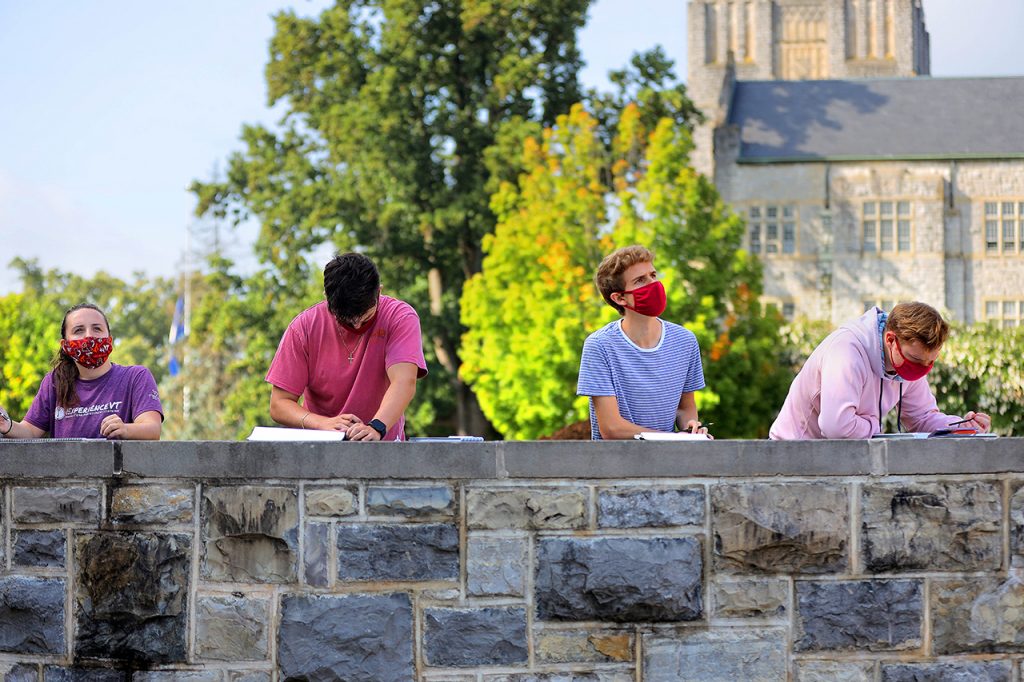
Though recent national and state reports have signaled a slight decline in public and private university undergraduate enrollments (declines of 2.5 percent and 3.2 percent, respectively), Virginia Tech’s undergraduate enrollment for the fall totaled 30,016 up from 29,300, a 2.4 percent increase from a year ago.
Virginia Tech’s total enrollment — including undergraduate, graduate and professional students — now stands at 37,010, up from 36,383 (an increase of 1.7 percent).
Enrollment for the fall in Virginia Tech’s Graduate School stood at 6,332 doctoral degree, master’s degree, certificate and non-degree students, compared to 6,414 a year ago.
“Despite the challenges that have come with a global pandemic, we continue to see students from across the commonwealth and the nation who are attracted to our strong academic programs and the opportunities we have created for engaged and experiential learning,” said Executive Vice President and Provost Cyril Clarke. “Our faculty are deeply committed to providing a world-class learning environment, which further enhances our recruitment and retention efforts.”
Virginia Tech’s comprehensive strategies for growth in underserved/underrepresented populations continue to be effective. The university currently enrolls 10,019 such undergraduate students, up from 9,417, an increase of 6.4 percent, from a year ago. Currently, 35.4 percent of the current domestic undergraduate enrollment is underserved and underrepresented populations, up from 34.5 percent from fall of 2019.
From almost 34,000 applications, Virginia Tech has welcomed an entering class of 7,790 — 6,574 freshman and 1,216 transfer students — this fall. The freshman class represents 46 different states and 30 different countries; the transfer class represents 26 different states and 14 different countries. Within the freshman class, 4,729 students (or 71.9 percent) hailed from Virginia; 1,023 (or 84.1 percent) of the transfer class call the commonwealth home.
“Beginning in 2017, we implemented several changes in our admissions process that focused on student access,” said Juan Espinoza, associate vice provost for enrollment management and director of admissions. “These changes are proving to be successful in support of broader university goals to have an increasingly diverse student body.”
The greatest negative impact of the COVID-19 pandemic upon the entering class was on the number of international students enrolled. The entering class included 201 international students, far below the goal of 475 targeted for this year.
In addition, 427 students (339 freshman and 88 transfer students) deferred admission to Virginia Tech, up from 104 students (94 freshman and 10 transfer) last year.
This year’s average first-year student grade point average (on a 4.0 scale) was 3.97, compared to 4.05 a year ago. The average combined SAT score was 1271, compared to 1289 a year ago.
In addition to the successful recruitment initiatives, undergraduate student retention efforts also remain strong. Last year’s freshman class of 7,596 students — the largest in Virginia Tech history — progressed to its second year at a 92.8 percent success rate. This compares to successful progression rates of 92.6 percent and 92.8 percent the previous two years.
Transfer students have also demonstrated a strong progression rate. Last year’s transfer class of 1,094 students progressed to its second year at a 90.1 percent success rate. The previous two transfer student classes progressed to their second year at rates of 89.3 percent and 90.2 percent.
“A successful enrollment management effort requires a comprehensive approach to student success,” said Luisa Havens Gerardo, vice provost for enrollment management. “Virginia Tech continues its commitment to not only recruit talented and diverse undergraduate students, but to provide the support and resources to promote their success.”



